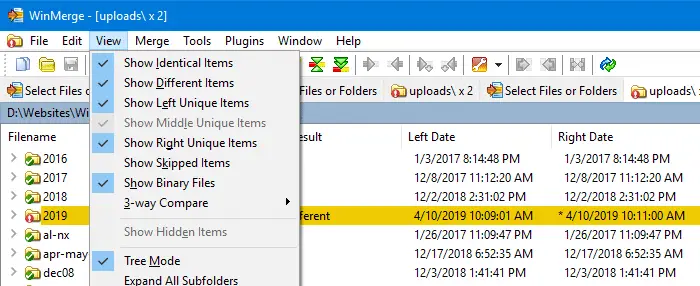
Once the process is through, your files or folders will once again be identical. Once you quickly scroll down through the differences in the files and you're satisfied that you want to keep all of the unique content from one file and move it to the other, just select the file you want to merge to, and choose either " Copy All to Right" or " Copy All to Left." These options automatically fly down through all differences and modify the master file so that it contains any additional content the other file may have. The last two options are actually the fully automated merge. You can either use the menu options or the keyboard commands to step through each difference in the files, and then either copy the additional text to the right or the left document, depending which one you want to make your "master" document. The first nine options in this menu are actually what I would call "semi-automatic" merging. The WinMerge duplicate files utility can not only tell you whether the two folders are duplicates, but it can highlight the exact differences so that you can decide what you need to do to make the two folders true duplicates. One of the most likely uses for this helpful application is to compare two files that you assume were synced, but maybe, for whatever reason, you've started to doubt that the two folders are truly duplicates.

This program will accept three arguments - a file or folder to display on the left, a file or folder to display on the right, and a filter that advanced users can use to manipulate the comparison and merge.

Or maybe you've been editing the same document in several locations, and you're no longer sure which one is the most recent, and you don't want to lose anything important in any one of the copies? The ability to compare seemingly duplicate files or folders can really come in handy sometimes.Īn Open Source application that offers that "diff" functionality to Windows users is a free duplicate files utility called WinMerge. Maybe you've had two common directories for a long time, and despite all efforts to keep them in sync, they no longer contain the same files. In Windows, the task isn't quite as simple as it is in Linux, but the need does arise every now and then.


 0 kommentar(er)
0 kommentar(er)
